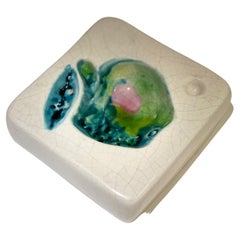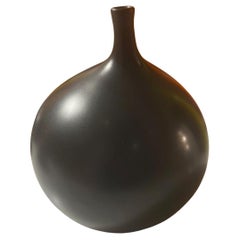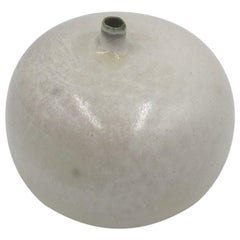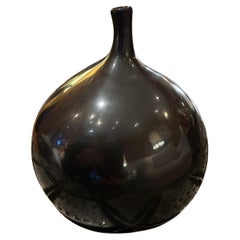Georges Jouve Apple
Vintage 1950s Decorative Dishes and Vide-Poche
Ceramic
Vintage 1950s French Modern Vases
Ceramic
Recent Sales
Vintage 1960s French Mid-Century Modern Ceramics
Ceramic
Vintage 1950s French Modern Vases
Ceramic
Vintage 1950s Vases
People Also Browsed
20th Century French Beaux Arts Pitchers
Ceramic
Vintage 1950s Ceramics
Ceramic
2010s Austrian Jugendstil Chandeliers and Pendants
Silk
20th Century Paintings
Canvas, Wood, Paint
Vintage 1960s Danish Mid-Century Modern Daybeds
Upholstery, Teak
Vintage 1970s Italian Mid-Century Modern Sofas
Fabric
Vintage 1950s French Modern Abstract Sculptures
Ceramic
Vintage 1920s French Bottles
Glass
Vintage 1960s French Mid-Century Modern Ceramics
Ceramic
Antique 15th Century and Earlier Chinese Tang Antiquities
Pottery
Mid-20th Century Swedish Scandinavian Modern Vases
Ceramic
Vintage 1960s French Coffee and Cocktail Tables
Metal
Mid-20th Century French Mid-Century Modern Vases
Earthenware
Vintage 1960s French Mid-Century Modern Wall Mirrors
Ceramic
Vintage 1980s French Mid-Century Modern Decorative Art
Ceramic
Vintage 1950s French Modern Ceramics
Ceramic
Georges Jouve for sale on 1stDibs
Georges Jouve was a modern-era ceramicist with a tirelessly creative spirit. He began his career creating vases and other utilitarian vessels but soon renounced anything produced on a pottery wheel in favor of modeling and sculpture techniques. Forms found in nature inspired him to create unusual pieces — large cups that rolled up like vast seashells, curiously stylized birds — all springing from an alert imagination. He left an indelible mark as an unconventional ceramist.
Jouve was born in France, in 1910, to a family of decorators. At 17, he enrolled in the Ecole Boulle in Paris, where he studied sculpture. After graduation in 1930, he became a theater-set designer to help support his new wife and family. He only dabbled in ceramics when he had time — and that time did not present very often.
During World War II, Jouve was interned in a German forced-labor camp for his political views. He eventually escaped and hid at his stepparent’s home in southern France — where he indulged in his passion for ceramics to pass the time. In 1944, after the Germans left Paris, he returned to the city and pursued his dream of opening a ceramics studio.
Jouve’s work caught the eye of furniture designer Jacques Adnet, who asked him to participate in the Contemporary Ceramics Exhibition, which was hosted by a decorating and publishing house founded by architect Louis Süe and painter André Mare. His work was warmly received, and his pieces began to sell.
From there, Jouve started to participate in numerous exhibitions. At the 1947 Urban Planning Exhibition in Paris, he won a silver medal for a wall covering. His work was then displayed at several international traveling exhibitions presented by the French Ministry of National Education and Ministry of Foreign Affairs, from 1947 to 1950.
In 1954, Jouve left Paris to set up workshops in southern France, where he concentrated on ceramics research and new techniques. His experimentation resulted in breathtaking pieces that other artists have attempted to copy for decades.
On 1stDibs, find Georges Jouve serveware, ceramics, pitchers and more.
Finding the Right Decorative Objects for You
Every time you move into a house or an apartment — or endeavor to refresh the home you’ve lived in for years — life for that space begins anew. The right home accent, be it the simple placement of a decorative bowl on a shelf or a ceramic vase for fresh flowers, can transform an area from drab to spectacular. But with so many materials and items to choose from, it’s easy to get lost in the process. The key to styling with antique and vintage decorative objects is to work toward making a happy home that best reflects your personal style.
Ceramics are a versatile addition to any home. If you’ve amassed an assortment of functional pottery over the years, think of your mugs and salad bowls as decorative objects, ideal for displaying in a glass cabinet. Vintage ceramic serveware can pop along white open shelving in your dining area, while large stoneware pitchers paired with woven baskets or quilts in an open cupboard can introduce a rustic farmhouse-style element to your den.
Translucent decorative boxes or bowls made of an acrylic plastic called Lucite — a game changer in furniture that’s easy to clean and lasts long — are modern accents that are neutral enough to dress up a coffee table or desktop without cluttering it. If you’re showcasing pieces from the past, a vintage jewelry box for displaying your treasures can spark conversation: Where is the jewelry box from? Is there a story behind it?
Abstract sculptures or an antique vessel for your home library can draw attention to your book collection and add narrative charm to the most appropriate of corners. There’s more than one way to style your bookcases, and decorative objects add a provocative dynamic. “I love magnifying glasses,” says Alex Assouline, global vice president of luxury publisher Assouline, of adding one’s cherished objects to a home library. “They are both useful and decorative. Objects really elevate libraries and can also make them more personal.”
To help with personalizing your space and truly making it your own, find an extraordinary collection of decorative objects on 1stDibs.



